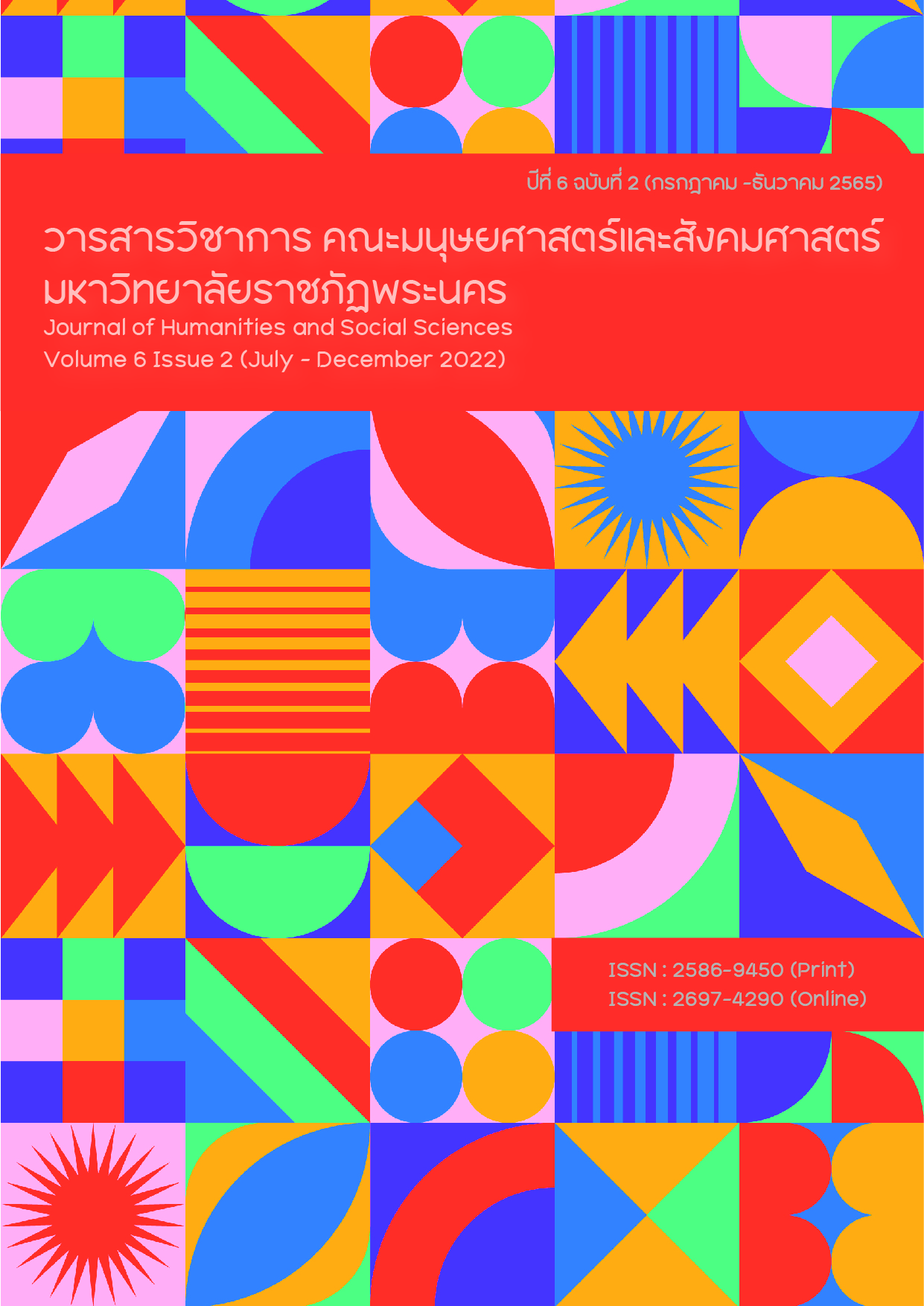Haiku for Aesthetic, Friendship and Language Development
Main Article Content
Abstract
Haiku originated from Japan consisting of 5-7-5 syllables in just three lines. This tiny poem was derived from Buddhist Zen teaching, helping on meditation at the present moment. Haiku is mostly about nature, seasons and small things surrounding us in everyday life. It is accepted in almost every country in the world and adapted to suit the local culture and languages. Haiku brings aesthetic, friendship and the language development. It is one of the few cultures from the far east to be accepted by the Western world. Academics used Haiku to study language development, psychology and even medical treatment.
Article Details
References
Biley, F.C. and Smith J.C. (2003). Attempting to say something without saying it: writing haiku in health care education. Journal of Medical Humanities, 29(1), 39-42.
Britannica. (2022). Haiku, Japanese literature. Retrieved June 12, 2022,
from https://www.britannica.com/art/haiku
Finch, A. (2003). Using poems to teach English. English Language Teaching, 15(2), 29-45.
Haikupedia. (2020). Kobayashi Issa. Retrieved April 5, 2022, from https://haikupedia.org/article-haikupedia/kobayashi-issa/
Hearn, L. (1915). Japanese Lyrics. Boston: The Riverside Press.
Haiku Society of America. (2022). How renku changed everything. Retrieved June 1, 2022, from https://www.hsa-haiku.org)
Iida, A. (2012). Writing Haiku in a second language: perceptions, attitudes and emotions of second language learners. Sino-US English Teaching, 9(9), 1,472-1,485.
Kacian, J. (2017). A brief history of Haiku in the United States. Retrieved May 1, 2022, from https://www.thehaikufoundation.org/omeka/files/original/8cd4850b0d0799d6c3c72cd025fc8111.pdf
Khamkhong, Y. (2019). Developing English proficiency in accordance with Thai context. HUSO Journal of Humanities and Social Sciences Phranakhon Rajabhat University, 3(1), 12-35.
Kizer, K. (2001). A brief history of Haiku. Retrieved May 1, 2022, from
https://litkicks.com/historyofhaiku/
Pierides, S. et. al. (2017). Haiku and the brain: an exploratory study. Juxtapositions: The Journal of Haiku Research and Scholarship 3 (1), Retrieved April 5, 2022, from https://eprints.bbk.ac.uk/id/eprint/21618/
Promchitta V. et. al. (2021). Haiku: the art and power of poetry and learning English.
Narkbhutparitat Journal, Nakhon Si Thammarat Rajabhat University, 13(3), 204-218.
Robarts. (2007). Academy and literature. Retrieved June 2, 2022, from
https://archive.org/details/academyliteratur56londuoft/page/438/mode/2up
Ross, B. (2022). Writing Haiku: A beginner’s guide to composing Japanese poetry. Malaysia: Tuttle Publishing.
Stephenson, K. and Rosen, D.H. (2015). Haiku and healing. Empirical Studies of the Arts, 33(1),
-60.
Tauchner, D. (2008). The aesthetic coordinates of Haiku: a Ginko towards Mount Fuji. Retrieved
June 21, 2022, from https://www.thehaikufoundation.org/omeka/items/show/1783
Thongmak, S. (2021). The development of English teaching style in the New Normal. HUSO Journal of Humanities and Social Sciences Phranakhon Rajabhat University, 5(2), 181-207.


